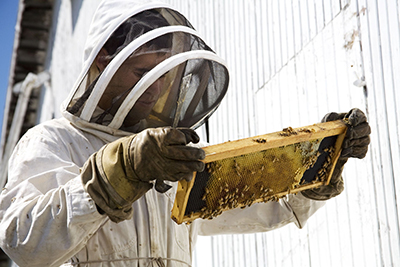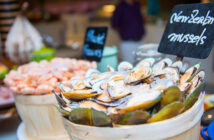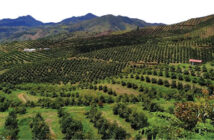By Steve Best
When The UK Food Standards Agency issued a warning about misleading and illegal claims on labelling of some Manuka honey sold in the UK in July, another potential threat to the integrity of New Zealand food exports seemed imminent. However, the responses from parts of the honey industry in New Zealand suggest that the issue really comes to adhering to existing international standards already in place and employing robust scientific testing methods to ensure honey marketed as Manuka is what it is purported to be.
Food Safety minister Nikki Kaye was quick to assure consumers and that the issue would be dealt with by the Ministry of Primary Industries and New Zealand Trade and Enterprise, working with industry to work through the issue in the short term and to establish long term parameters to ensure the integrity of Manuka honey.
In an interview with Radio New Zealand last month the minister said that a challenge to the labelling issue came down to science. “Part of the difficulty is that there aren’t any clear scientific markers at the moment, so the whole debate is around what the label says,” the minister says.
That notion has been vigorously challenged by Manuka Health’s chief executive Kerry Paul who says that New Zealand and German scientists agree that the essential compound, methylglyoxal, that gives Manuka honey its antibacterial nature can be measured and quantified.
“Manuka Health has led the way in developing a robust scientific method to quantify the actual amount of methylglyoxal in our manuka honey products. Our labelling system, based on methylglyoxal levels, provides consumers with a reliable way of buying genuine manuka honey with the activity for which it is famous around the world,” Mr Paul says.
John Smart, Airborne Honey sales and marketing manager has also weighed in to the debate and says that despite public feeling that there are no standards for Manuka honey the opposite is true and that international standards already exist and if adhered to will protect both producers and consumers alike.
“New Zealand and over 140 countries are signatory to the CODEX Alimentarius the worldwide International Standard for Honey, administered by the Joint FAO/WHO Food Standards Programme. According to CODEX, honey may be designated according to a floral or plant source if it comes wholly or mainly from that particular source and has the organoleptic, physicochemical and microscopic properties corresponding with that origin. This means it must taste like Manuka, have a sugar spectrum, mineral levels and pollen content consistent with Manuka and be undamaged by heat (HMF levels below 40mg/kg). Based on longstanding research Manuka should contain in excess of 70 percent Manuka pollen to be classified as Manuka honey. Finally, to be labelled a product of New Zealand, it should be possible for the honey to be traced back to the actual apiary,” Mr Smart says.
“From our own analysis, an average of 67 percent of all the honey labelled as Manuka in New Zealand does not meet the CODEX standard for Manuka honey,” adds John.“There is honey on the shelf purporting to be Manuka honey that contains as low as 8.5 percent Manuka pollen, (CODEX Standard 70 percent Manuka pollen) as well as being seriously damaged by heat containing HMF levels (HMF HydroxyMethylFurfuraldehyde) of 45.15mg/kg in New Zealand and over 80 mg/kg overseas. (CODEX Standard 40mg/kg HydroxyMethylFurfuraldehyde).The industry is embroiled in making antibacterial claims with its associated numbering system for honey that does not meet the CODEX, consequently many honey brands are using the name Manuka as a brand forgetting about honey variety and quality standards associated with the variety.”
“It is clear that the CODEX variety measurements have to be applied to a specific honey to determine if it is in fact the variety claimed to be on the label. There is a very good reason for a number of measurements to be applied because honey is complex and one property does not determine the variety alone. Adhering to such an in-depth international standard, that is embraced by producers across the world, would prevent rogue brands taking advantage of consumers and the high prices they are willing to pay for Manuka honey,” Mr Smart says.
Airborne Honey has also recently launched an Honest, Undamaged and Traceable label, which is designed to assist consumers in selecting select honey based on variety and quality.
Whatever plan is adopted at a governmental level in the short to long term the signs are at least positive that the industry has embraced the issues arising from the warning issued by the UK Food Standards Agency and that there are scientific testing regimens and international standards, which if employed for all producers of Manuka honey, will create a greater degree of consumer confidence.





























































































